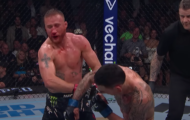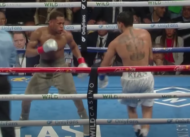Full Contact Fighter’s “The Daily Takedown:” What the Next Big MMA Company Should Learn From Strikeforce’s Sad and Unnecessary Demise
By Joshua Molina
Nearly seven years ago, 18,265 people packed San Jose’s Shark Tank, not to watch hockey, figure skating or a live concert.
They came to watch “cage fighting.” The legendary Frank Shamrock, a San Jose resident, battled Cesar Gracie in the main event. On the undercard, a young Vietnamese-American fighter Cung Le made his MMA debut.
The show launched a group of Bay Area fighters into the mainstream, under the banner of Strikeforce mixed martial arts, which was owned by Scott Coker and his primary investors, Silicon Valley Sports & Entertainment.
What followed were TV deals with Showtime, primetime on CBS, early-morning on NBC and national recognition of San Jose, California as “the hotbed of MMA.”
To this day, the Shamrock vs. Gracie fight owns the record for the largest paid live attendance for an MMA show in California.
Over the next 5 years, Strikeforce would hold 19 shows at what became the HP Pavilion, along with dozens of other shows around the country.
But tonight, Jan. 12, Strikeforce will hold its final show, 1,600 miles away from San Jose, in Oklahoma City, probably in front of less than 5,000 people.
The show will mark the official end to Strikeforce, which became the No. 2 MMA company in the world.
How did the company rise and fall so fast?
Silicon Valley Sports & Entertainment, now Sharks Sports & Entertainment, wanted to return its focus to hockey and its other brand, the San Jose Sharks.
Strikeforce, despite its success had also backed itself into a financial corner with a co-promotional partnership with M-1 Global, to promote Fedor Emelianenko.
So at the height of its popularity, Coker and his hockey-centric investors sold Strikeforce to its competitor, the UFC in 2011.
As everyone expected, after the sale, Strikeforce died a death by a thousand cuts at the hands of its owner, the UFC.
On Jan. 12, Strikeforce and San Jose’s once sizzling MMA force dies for good, with a card rich with mostly unrecognizable names.
Nick Diaz, gone. Cung Le, gone. Jake Shields gone.
Even the current titleholders, Luke Rockhold and Gilbert Melendez won’t be fighting. They were too injured to fight on the final show.
A card that was once called “Champions” will feature one championship fight – Nate Marquardt, a former UFC star, defending against Tarec Saffiedine, for the Welterweight Championship.
As we say goodbye to Strikeforce, let’s remember that the organization changed MMA for the better.
It gave birth to stars such as Ronda Rousey, Nick Diaz, Luke Rockhold, Jake Shields, Josh Thomson, Cris Cyborg Santos, Gilbert Melendez, Gegard Mousasi, King Mo, Cung Le, KJ Noons, Rafael “Feijao” Cavalcante, Daniel Cormier, Alistair Overeem and several other former world champions.
It also was the place that allowed Frank Shamrock to build on his legacy and reintroduce himself to a new generation of MMA fans.
He finished the Shamrock vs. Gracie rivalry when he KO’d Cesar Gracie, before eventually becoming the voice Strikeforce, as a Showtime analyst, along with broadcast partners Mauro Ranallo, Pat Militech, and at times Gus Johnson and Stephen Quadros.
It’s where, after a decade, Fedor finally lost.
The current popularity of women’s MMA can be directly traced back to Strikeforce, which staged Gina Carano vs. Cyborg Santos in 2009, another HP Pavilion event with nearly 15,000 people in attendance.
Careers were made – and killed – in Strikeforce. Expect Luke Rockhold, Daniel Cormier and, of course, Rousey, to have big UFC careers.
What Strikeforce ultimately proved was that the UFC is not the NFL of MMA.
Another company can survive, and beat the UFC, as Strikeforce did in California, if it knows what it is doing.
The right combination of talent, financial capital and knowledgeable business people can create a successful MMA company that can compete with, and even outperform, the UFC.
The people behind Strikeforce had that, but then lost it, and, worse, lost faith in the product, just as it was on the verge of major mainstream success.
For the sake of the fans, fighters, even the UFC — because competition will make them better — let’s hope the next group of MMA investors are a lot smarter and more business savvy than the Silicon Valley Sports & Entertainment investors who let Strikeforce slip from their hands.










